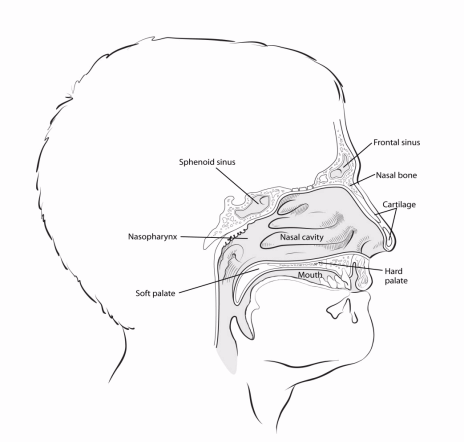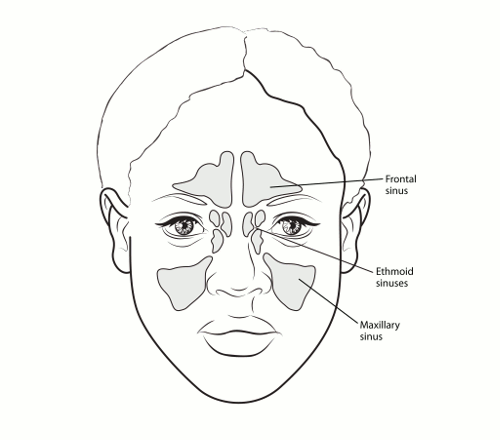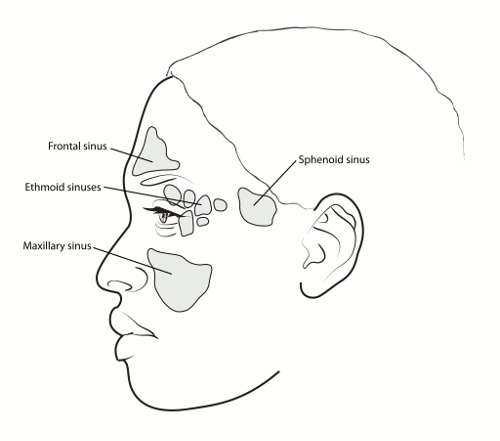Your gift is 100% tax deductible
What Are Nasal Cavity and Paranasal Sinus Cancers?
Nasal cavity and paranasal sinus cancers are types of head and neck cancers. Head and neck cancers can have many different names depending on where the cancer starts. Cancer starts when cells in the body begin to grow out of control.
- Nasal cavity cancers start in the opening behind the nose
- Paranasal sinus cancers start in the air-filled spaces in the skull around or near the nose
Both types are covered here because these 2 structures are close to each other.
Since the head and neck area has so many organs in a small place, knowing what type of head and neck cancer you have can be confusing. Ask your doctor to write down the exact kind of cancer you have and show you where it is on a picture. To learn more about how cancer starts and spreads, see What Is Cancer?
The nasal cavity
The nose opens into the nasal cavity. This cavity is a space that runs along the top of the roof of the mouth (the palate, which separates your nose from your mouth) and then turns slightly downward to join the nasopharynx (the upper part of the throat).
The paranasal sinuses
Sinuses are small air-filled spaces in the bones that are connected to the nasal cavity. They are called paranasal because they are around the nose. The different sinuses are named depending on which bones they are in:
- Maxillary sinuses are in the cheek area, below the eyes on either side of the nose.
- Frontal sinuses are above the inner eye and eyebrow area.
- Sphenoid sinuses sit deep behind the nose, between the eyes.
- Ethmoid sinuses are above the nose, between the eyes.
The sinuses are normally filled with air. When you have a cold or sinus infection the sinuses can become blocked (obstructed) and filled with mucus and pus, which can be uncomfortable. This mucous can drain from your sinuses into your nasal cavity.
To see more details of the nasal cavity and paranasal sinuses, explore the 3D interactive color model.



The nasal cavity and paranasal sinuses do many things:
- They help filter, warm, and moisten the air you breathe.
- They give your voice resonance (sound).
- They lighten the weight of the skull.
- They provide a bony framework for the face and eyes.
The nasal cavity and the paranasal sinuses are lined by a layer of mucus-producing tissue (mucosa). The mucosa has many types of cells, including:
- Squamous epithelial cells, which are flat cells that line the sinuses and make up most of the mucosa
- Glandular cells such as minor salivary gland cells, which make mucus and other fluids
- Nerve cells, which are responsible for sensation (being able to feel) and the sense of smell in the nose
- Infection-fighting cells (which are part of the immune system), blood vessel cells, and other supporting cells
Other types of cells in the nasal cavity and paranasal sinuses, including bone and cartilage cells, can also become cancer.
Types of nasal cavity and paranasal sinus cancers
Cancer can start from any type of cell that makes up the mucosa, and each type of cancer acts and grows differently.
- Squamous epithelial cells can become squamous cell carcinomas (squamous cell cancer). This is the most common type of cancer in the nasal cavity and paranasal sinuses. It makes up a little over half of cancers of these areas.
- Minor salivary gland cells can turn into adenocarcinomas, adenoid cystic carcinomas, and mucoepidermoid cancers. These are the second most common nasal and paranasal sinus cancers.
- Undifferentiated carcinoma (undifferentiated cancer) of the nasal cavity or paranasal sinuses is a very fast-growing cancer and the cells look so abnormal that it’s hard to tell what type of cell the cancer started in.
- Cells that give the skin its tan or brown color are called melanocytes. Melanoma is a type of cancer that starts in these cells. It can grow and spread quickly. These cancers usually are found on sun-exposed areas of the skin but can form on the lining of the nasal cavity and sinuses or other areas inside the body.
- Esthesioneuroblastoma is a cancer that starts in the olfactory nerve (the nerve for the sense of smell). This cancer is also called olfactory neuroblastoma. It usually starts in the roof of the nasal cavity and involves a structure called the cribriform plate. The cribriform plate is a bone deep in the skull, between the eyes, and above the ethmoid sinuses. These tumors can sometimes be mistaken for other types of tumors, like undifferentiated carcinoma or lymphoma.
- Lymphomas (cancers starting in immune system cells called lymphocytes) can occur in the nasal cavity and paranasal sinuses and are the third most common cancer found in this area. One type of lymphoma seen in this area, T-cell/natural killer cell nasal-type lymphoma, was previously called midline lethal granuloma. See Non-Hodgkin Lymphoma for information about the diagnosis and treatment of lymphomas.
- Sarcomas are cancers of muscle, bone, cartilage, and fibrous cells that can start anywhere in the body, including the nasal cavity and paranasal sinuses. Information about sarcomas can be found on some of our other pages.
Each of these types of cancer has a distinct behavior and outlook. They cannot all be treated the same way. Many of them rarely affect the nasal cavity and paranasal sinuses, so they've been hard to study. Because of this, doctors must base treatment decisions on their experience with similar cancers in other parts of the head and neck.
Other growths found in the nasal cavity and paranasal sinuses
Some growths in the nasal cavity and paranasal sinuses are not cancers, but they could still cause problems.
Nasal polyps
Nasal polyps are abnormal growths inside the nasal cavity or paranasal sinuses. Most nasal polyps are benign (not cancer) and are caused by some type of chronic (long-lasting) inflammation in the nose. Using exams and tests, doctors can often tell benign polyps from cancer. But in some cases, polyps need to be closely checked to be sure. Polyps usually have a teardrop shape and a smooth surface. Small polyps that aren't causing problems might not need treatment. Larger polyps that cause problems might need to be treated with medicine or surgery.
Papillomas
Papillomas are warts that can grow inside the nasal cavity or paranasal sinuses and destroy healthy tissue. They usually have a bumpy surface. Papillomas are not cancer, but sometimes a squamous cell carcinoma will start in a papilloma. Because of the risk of cancer, papillomas in the nasal cavity and paranasal sinuses are removed by surgery.
Inverted papilloma. This type of papilloma grows inward and into the underlying bone. Even though an inverted papilloma is classified as a benign tumor, locally it can act aggressively like a cancer. It tends to recur (come back) and can become cancer. Inverted papillomas are often treated with the same type of surgery that's used for cancer.
- Written by
- References

The American Cancer Society medical and editorial content team
Our team is made up of doctors and oncology certified nurses with deep knowledge of cancer care as well as editors and translators with extensive experience in medical writing.
Mendenhall WM, Dziegielewski PT, Pfister DG. Chapter 45- Cancer of the Head and Neck. In: DeVita VT, Lawrence TS, Rosenberg SA, eds. DeVita, Hellman, and Rosenberg’s Cancer: Principles and Practice of Oncology. 11th ed. Philadelphia, Pa: Lippincott Williams & Wilkins; 2019.
National Cancer Institute. Paranasal Sinus and Nasal Cavity Cancer Treatment (PDQ)–Patient Version. November 06, 2019. Accessed at www.cancer.gov/types/head-and-neck/patient/paranasal-sinus-treatment-pdq on November 13, 2020.
Thompson LDR, Franchi A. New tumor entities in the 4th edition of the World Health Organization classification of head and neck tumors: Nasal cavity, paranasal sinuses and skull base. Virchows Arch. 2018;472(3):315-330. doi:10.1007/s00428-017-2116-0.
Last Revised: April 19, 2021
American Cancer Society medical information is copyrighted material. For reprint requests, please see our Content Usage Policy.
American Cancer Society Emails
Sign up to stay up-to-date with news, valuable information, and ways to get involved with the American Cancer Society.



